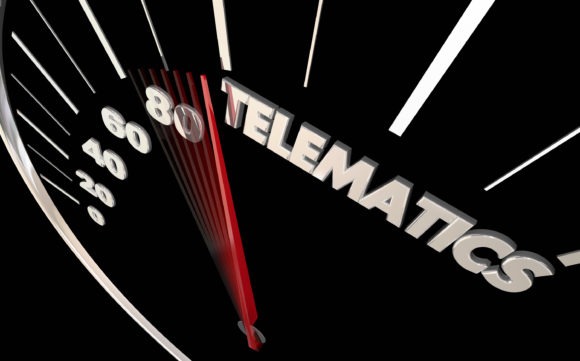The number of Maryland auto insurance policies enrolled in a telematics program has been consistently growing, increasing by about 45% from 2021 to 2023. About 55% of the enrolled policies experienced an increase or decrease in premiums, according to results from a new survey by the state’s insurance commissioner.
Premiums fell for about 31.2% of telematic policies and rose for about 23.6% at renewal in 2023. About 45% of policies had no change in premium, the Maryland Insurance Administration (MIA) said in its report on the growing use of telematics in Maryland.
MIA’s market conduct data for the last three years indicates roughly half of the insurers in the auto market in the state have some form of telematics program and that the number of carriers offering telematics is increasing. In 2023, of the state’s 126 auto insurance carriers, 54 that wrote 43% of the market indicated that they were using/collecting telematics data in some way. That was up from 42 in 2022 and 53 in 2021. Despite a drop in the number in 2022, the insurance department concludes that the use of telematics in the auto insurance market is not going away.
“The findings from the survey indicate that more and more insurers are adopting telematics programs and that consumers need to be aware of what is collected and how the data is used prior to consenting to enroll in one of these programs,” the report says.
The report notes that privacy notices vary from insurer to insurer and there are currently no requirements regarding how the notices must be written. In general, these programs require the active involvement of policyholders to ensure that data is being collected accurately.
While telematics programs are intended to provide policyholders with some control and influence over the premium that they pay, MIA cautioned consumers that the data collected can result in increases in premium.
In December of 2024, MIA surveyed to 18 insurers representing 80.9% of the 2023 auto insurance market in Maryland. This survey included only the private passenger auto segment of the market and not commercial insurance. The data from two insurers that do not have a telematics program were not be included in the report.
Telematics programs collect data through devices installed in a vehicle, through mobile applications, or through other methods. The data is transmitted in real time back to insurers regarding the driving behaviors of policyholders. Insurers the use this data to alter the pricing of a policyholder’s policy
Below are various findings from the survey, including common driving data points that insurers collect in their telematics programs.
Enrollment Numbers
The survey revealed that there has been a consistent and gradual increase in the number of Maryland consumers enrolled in a telematics program through their auto insurer. In 2023, 303,845 policies were enrolled in some type of telematics program, out of a total of 2,296,713 in force policies. That was an enrollment rate of 13.23%. In 2022, the enrollment rate was 12.39% and, in 2021, the rate was 9.49%.
Rate Changes
In 2023, a total of 62,233 or 23.6% of all policies linked to some type of telematics program experienced a premium rate increase due to an adjustment in the telematics score at renewal. In 2023, a total of 82,170 or 31.15% of such policies experienced a premium rate decrease at renewal. In 2023, 45.24% of policies experienced no change in premium at renewal as a result of telematics data reviewed.
Voluntary
Almost all of the carriers indicated that their programs are completely voluntary but not all drivers have to agree to be tracked. It is possible for only one vehicle and/or driver insured by a policy to opt in. In this instance, the carriers indicated that the average of all drivers would be used to calculate the telematics factor score. Non-participating vehicles and/or drivers are given a neutral score is averaged with the participating vehicles and/or drivers’ scores.
Test Drive
Some insurers require a test drive at the start in order to determine the telematics rating factor that will be used for the policy moving forward. A “test drive” means an underwriting period after the policy is bound during which the insurer collects data to set a premium for the policy.
Data Review and Scoring
All 16 insurers indicated that their telematics program processes are fully automated. Many said that they conduct regular audits to make sure that they are collecting accurate information. Policyholders can review their trips and data in their apps to make sure that trips are classified correctly. All 16 insurers indicated that some form of scoring is utilized when reviewing telematics data although their scoring formulas vary.
Score Changes
Thirteen insurers said that telematics data is assessed at renewal. Many indicated that a policyholder’s telematics rating factor or score will remain constant and that it will only change if a policyholder requests to be re-monitored for the purpose of generating a new score. In that way, for many of these programs, policyholders can choose when and if they would like to be monitored for a telematics rating change. Two insurers said telematics data is assessed more frequently than only at policy renewal, while one said that it makes no changes after the initial rating and a policyholder cannot request a re-monitor.
Data Collected
The 16 insurers provided a general summary of the data elements collected by their telematics’ programs. The elements identified include: Location, Speed, Braking, Time of Day, Acceleration, Cornering, Trip Route, Odometer, Deceleration, Battery Level, Fuel, Vehicle Data Trouble Codes, Vehicle Information, Distance, Vehicle Identification Number, Device Trouble Codes, Mobile Phone Usage, Phone Permissions, Device Information, Days Driven, Distracted Driving, Mobile Phone Type, Ignition, Idle Time, Adaptive Cruise Control, Lane Keep Assistance, Automatic Emergency Braking, Seatbelt, Turn Signal, Adaptive High Beam, Engine RPMs, Altitude, Installation Time Stamp, Uninstalled Time Stamp, Plugged or Unplugged (Telematics Device), G-Force, Swerving, Handheld Calling, Hand-Free Calling, Phone Handling, Screen Activation Data, Forward Collision Warnings, Forced Autopilot Disengagements, Unsafe Following, Aggressive Turning and Phone Motion.
A number of insurers reported that telematics data is only used for rating and not for underwriting. Underwriting entails assessing an individual policyholder’s risk level based off of factors, such as age, vehicle, driving record, and accident history. According to these insurers, the underwriting of the policy is unaffected by the collection of telematics data. The only thing that is changing then is a rating factor that impacts the premium paid, but not the underlying underwriting of the policy.
Disclosures
All 16 insurers indicated that disclosures regarding, for instance, what data is collected, are provided to policyholders prior to their enrollment in a telematics program. In the majority of instances, these disclosures are all provided during both the quoting process and binding process. All of the respondents indicated that policyholder consent to the collection of data is required prior to enrollment in a telematics program. Some insurers did indicate that if there is a minor on the policy, the adult policyholder can consent on behalf of that minor.
Maryland Insurance Commissioner Marie Grant said her department will use the data collected to inform regulatory policy regarding telematics and to advise on future potential legislation
“The Maryland Insurance Administration decided to execute this survey, because we heard from consumers with concerns about the accuracy of telematics data and its use for possible premium increases,” said Grant. “It is essential for consumers to understand what they are signing up for prior to making the decision to enroll in a telematics program.”
Topics Maryland
Was this article valuable?
Here are more articles you may enjoy.



 France Makes New Arrests in Louvre Heist; Jewels Still Not Found
France Makes New Arrests in Louvre Heist; Jewels Still Not Found  Buffett’s Berkshire Cash Hits $382 Billion, Earnings Soar
Buffett’s Berkshire Cash Hits $382 Billion, Earnings Soar  Satellite Data Reveals Hurricane Melissa Damage in Jamaica
Satellite Data Reveals Hurricane Melissa Damage in Jamaica  Starr Acquiring IQUW; Starr Managing Agency to Be Among 10 Largest at Lloyd’s
Starr Acquiring IQUW; Starr Managing Agency to Be Among 10 Largest at Lloyd’s 

